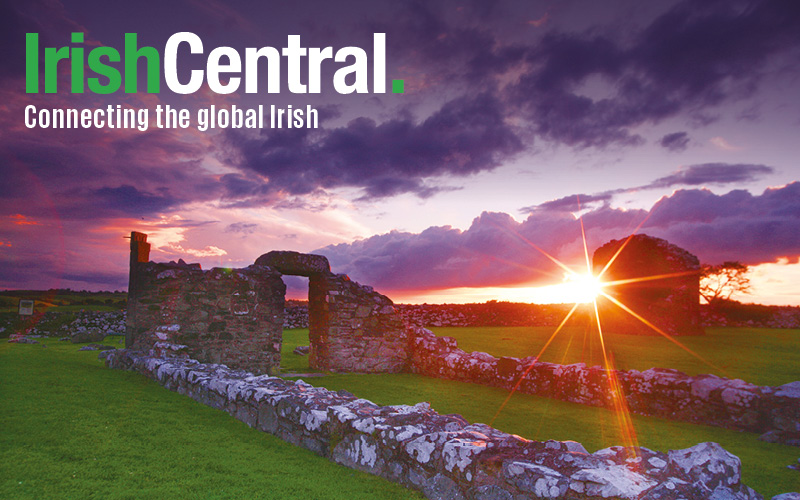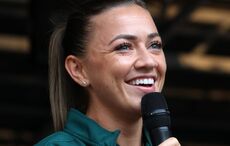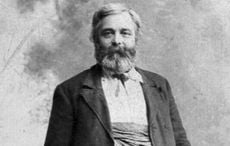Ireland is a country of barely four million people. Creating sporting giants is not easy with such meager resources. Irish sporting moments tend to be bittersweet or just plain bitter. Precious few victories stand out. And, being Irish, controversy abounds. So, For better or worse, the top ten Irish sporting moments:
1) Leinster v Munster
Fifteen years ago, before Irish rugby went professional, it was watched by a bunch of private school blazers and a few crombie coats. Now, it’s the hottest ticket in town. Whether it’s the Celtic League or the high profile European competition – which both sides have won in recent years – the meeting of Munster versus Leinster makes Irish rugby fans salivate where before they could not have told you when the two sides played.
The presence of Ireland’s rugby heroes, surely now more popular and well-known than many of the country’s soccer players, is surely the reason. Brian O’Driscoll, Paul O’Connell, Ronan O’Gara, Gordon Darcy, Peter Stringer … the list goes on. Not to mention the apparent dislike when the two sets of players, who put their bodies on the line for each other in green, line out in their respective strips of red (Munster) and blue (Leinster).
Surely the greatest meeting between the two was the 2009 Heineken European Cup clash in Croke Park. 80,000 fans – the world record attendance for a club rugby match, from a pairing that had, just ten years before, attracted a few hundred midly interested observers – watched Leinster, the underdogs, put Munster to the sword, with the fatal thrust coming in the form of a cheeky intercept try from Brian O’Driscoll.
2) Sean Kelly/Stephen Roche
During the last recession in the mid-eighties, Ireland was starved for sporting heroes. Jack Charlton’s army was not yet imaginable and Barry McGuigan had lost his world title after on his third defense. But Ireland was not short of global sporting superstars. Sean Kelly, a teak-tough farmer’s son from Waterford, and Stephen Roche, a more urbane city boy from Dundrum, south Dublin, were at the top of their careers. Sales of racing bikes had gone through the roof and kids all over the country went haring around the country roads imagining they were pro cyclists. In 1987, Roche won the Tour de France and the Giro D’Italia and Ireland went cycling crazy. The Taoiseach went to France to bask in the glory, there were victory parades through Dublin City, and Ireland had a new hero.
3) Ireland soccer – Italy v Ireland in the Giants Stadium 1994
The 1990 World Cup in Italy had been a dream for Irish soccer fans. Even in defeat Ireland had been champions. From nowhere, Jack Charlton had taken a team of journeymen culled from the ranks of English football and sprinkled with some extravagantly gifted players, imposed a rigid system, and beaten the best in the world. It was too much to expect a repeat. Ireland’s opening game in the 1994 world cup in the U.S.A. was to be a repeat of its last game in 1990; Italy in the Giants stadium, with Ireland bringing a fast-ageing team and an even faster ageing approach to the game, bespoke humiliation. The heat, the skills of the Italians … Ireland were doomed. That is until Ray Houghton, the Scottish born midfielder latched onto a loose ball in front of the Italian goal, hit a looping shot over Gianluca Pagliuca and into the net. Then it became the Paul McGrath show. The Black Pearl of Inchicore wrapped up the most glittering of Italy’s strikers, repeatedly throwing himself between them and the ball. After the game, New York and New Jersey didn’t know what had hit them.
4) Roy Keane in Saipan – 2002
A Corkman was blamed for the first Irish Civil War in 1921. Mick Collins knew he was acting in the best interests of the country, but many disagreed. In 2002, a Corkman sparked the second Irish Civil War, and he, too, argued he was doing it for the most principled of reasons. Roy Keane’s high profile bust-up with Mick McCarthy (Dev?) split the country in two and possibly cost Ireland a second ever quarter-final appearance in a world cup. With lackluster games against Cameroon, Germany and Saudi Arabia, Ireland scraped through to the next round to meet Spain, where they missed chance after chance to kill the game off, then suffered the heartbreak of going home after losing on penalty kicks. Roy Keane, meanwhile, was back home walking his dog, he said with a clear conscience. Vilified by his enemies as a traitor, but deified by his fans as a man who wouldn’t settle for second-best.
5) Padraig Harrington wins first major
Padraig Harrington, for much of his career, threatened to be Mr. Second Place. He was well into the high twenties and people were beginning to wonder if he had a psychological block when it came to winning. Sure, he’d won some big tournaments, but had never won a major and had that unfortunate habit of choking at the last minute. And then the British Open in 2007. The old Scottish links course suited him, but even still, it’s easy to forget that he almost blew it. A solid first three rounds left him within touching distance of victory and in the fourth round it came down to him and Spanish golfer Sergio Garcia and, on the final hole, Harrington had a one-shot lead. He hammered his tee-off for distance rather than safety and watched in horror as it bounced inexorably towards the Burn, the small river that has put paid to the hopes of so many golfers. For a second, it looked as if the ball would bounce over the bridge and to the other side. Instead it plopped into the water. Incredibly, his second shot went in too – this time straight in. Fortunately, Garcia was having a nervy time and the pair ended level. In the play-off, Harrington regained his composure and went on to win. But it could so easily have been another second place for Paddy Harrington. A year later he retained it, this time without the drama.
6) Ireland v England in Croke Park, February 2007
Croke Park, that great pantheon of pure, Gaelic, Irish games. The site of the Bloody Sunday massacre, when British troops shot 14 civilians dead. The arena where so many Irish sporting heroes excelled at Ireland’s indigenous games. The receptacle of the Irish soul. And to have ‘God Save The Queen’ played there and sung by tens of thousands of English rugby fans? Heresy, surely. But in February 2007, that’s precisely what was about to happen. Ireland’s maturity was to be tested. Would the English national anthem be booed? Would riots break out? Would Irish people disgrace themselves? Not at all. The anthems were greeted with respectful silence. And then, to everyone’s relief, the Irish rugby team hammered England 43-14.
7) The Irish Derby
If the story of Irish sport is one of glorious failure and almost-rans, then horse racing is the exception. As the great commentator Ted Walsh has pointed out, Ireland is the Brazil of horse racing. Dermot Weld, John Oxx, Vincent O’Brien, and Aidan O’Brien are among the biggest trainers. Kieren Fallon, Mick Kinane, Johnny Murtagh, Ruby Walsh and Tony McCoy are some of the best jockeys. And Ireland breeds some of the most famous horses: Red Rum, Arkle, Shergar, Istabraq … Coolmore and Ballydoyle are virtual production lines for famous horses. The Irish Derby, run over one mile and four furlongs of prime County Kildare sod on the famous Curragh Plains is one of the biggest races in the world.
8) Michelle Smith
Like Roy Keane, she divided a nation. Three gold medals in one Olympic Games, unheard of for an Irish athlete. But the questions over her astonishing leap in performance, the tampered-with drug tests and her doper husband persisted and persist still. Atlanta 1996 was a time of disbelief in Ireland. An Irish athlete – a swimmer, no less – sweeping all before her. The rumors began to trickle out. First Janet Evans’s tearful press conference. Jealousy, surely? Then her whiskey-contaminated urine sample. Traces of steroids in another sample. But she was never stripped of the medals and remains Ireland’s most successful Olympian. And the most controversial. Just don’t bring her name up in polite conversation.
9) Barry McGuigan
The Fighting Irish. Both in and out of the ring, Irish people have a reputation for being scrappers. But by the late 1980s, that reputation had not translated into gold medals or championship belts in boxing for quite some time. Barry McGuigan, the wiry featherweight from Clones, changed that, albeit briefly. He dropped world champion Eusebio Pedroza of Panama in the seventh round to take his title and the Clones Cyclone became an Irish hero. To both sides of the divide. Born Roman Catholic in the border town of Clones, he took British citizenship to fight for Britain in the Commonwealth games, married a Protestant, and, in the midst of the Northern Ireland troubles, he managed to appeal to both sides of the divide and insisted on a non-sectarian stance. As was said at the time, “Leave the fighting to McGuigan.”
10) Sonia O’Sullivan
Sonia O’Sullivan could be the embodiment of Irish sport. Abundant talent, some great successes, but somehow never seemed to make the breakthrough on the really big stage. Fourth in the 3000 meters in Barcelona in 1992, where the silver medalist later tested positive for drugs. An upset stomach in Atlanta in 1996, causing her to fade out of the final miserably. A silver medal in 2000 seemed a meager reward for her domination of long-distance running in non-Olympic years and her bagful of world and European medals in other competitions. And while Olympic glory would always elude her, she never courted controversy like a Roy Keane or a Michelle Smith, and her loping stride and that kick of acceleration is the iconic image of Irish athletics for much of the 1990s.




Comments